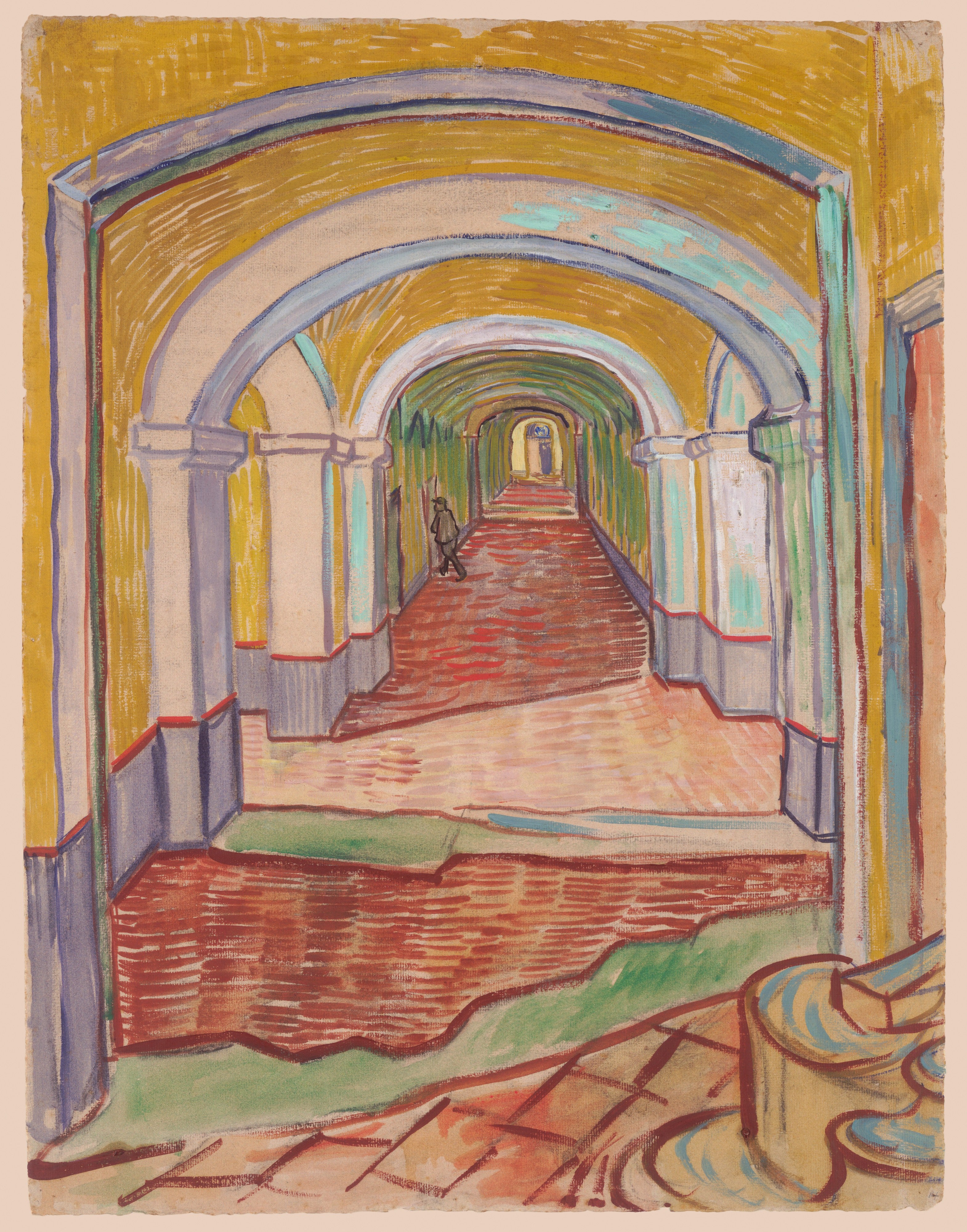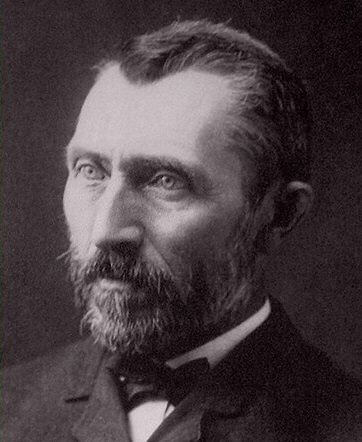
Corridor in the Asylum
In the spring of 1889, grappling with profound mental health struggles, Vincent van Gogh voluntarily entered the psychiatric hospital at Saint-Rémy-de-Provence, housed within the ancient stone walls of the Romanesque monastery of Saint-Paul-de-Mausole. Far from abandoning his artistic practice, Van Gogh continued to paint and draw with remarkable intensity during his twelve-month confinement, turning his attention both to the natural beauty of the surrounding landscape and to the cloistered world within the asylum itself.
While much of his Saint-Rémy output captures sunlit wheat fields, twisted olive trees, and blooming irises, this particular work takes a strikingly different turn—a rare and haunting interior view of one of the asylum’s long, receding corridors. Though rendered in Van Gogh’s familiar, vibrant palette, the scene evokes a profound sense of isolation and emptiness. The sharply diminishing perspective draws the eye down the deserted hallway, its shadowed archways and cold stone floor suggesting both physical confinement and psychological distance.
Van Gogh created this drawing not only as a study in perspective and mood, but as a personal communication, sending it to his brother Theo to offer a visual impression of his new surroundings. The image reveals much about the artist’s state of mind: while the rhythmic arches and warm colors attempt order and clarity, the atmosphere is heavy with a kind of spiritual desolation. The corridor, stripped of human presence, becomes a metaphor for Van Gogh’s inner landscape—structured, yet hollow; beautiful, yet sorrowful.
Though he continued to produce some of the most celebrated works of his career during his stay at Saint-Rémy, the experience did not bring the healing he had hoped for. Less than a year after his admission, and shortly after leaving the asylum, Van Gogh died by suicide in July 1890. This quiet, meditative drawing stands as a deeply personal record—not only of a place, but of a moment suspended in the complex space between creativity, suffering, and solitude.
Choose options


Corridor in the Asylum
About Artist

Vincent van Gogh
